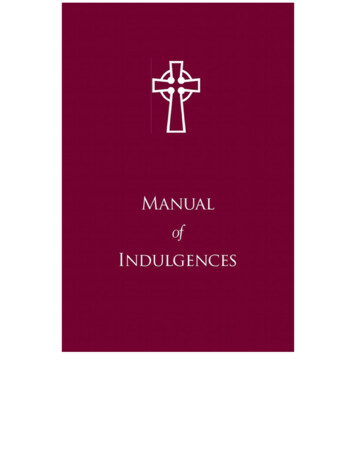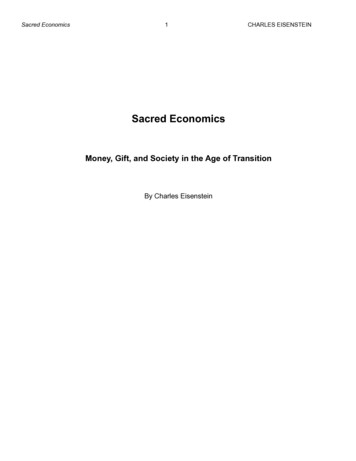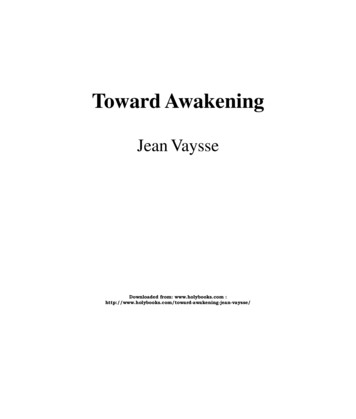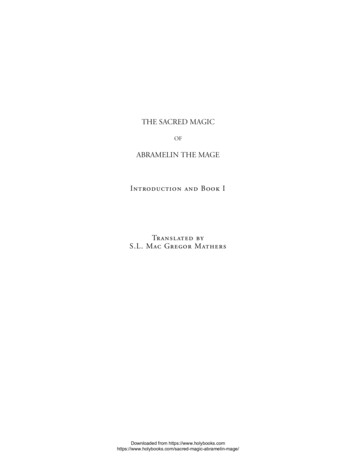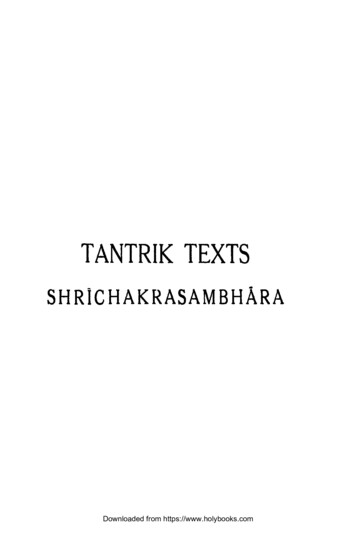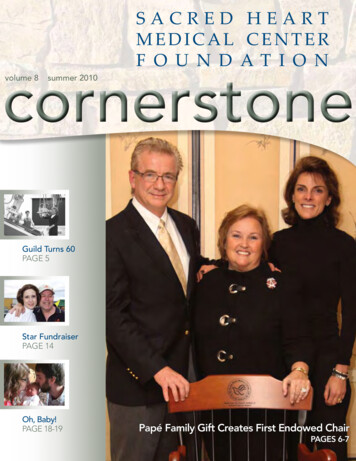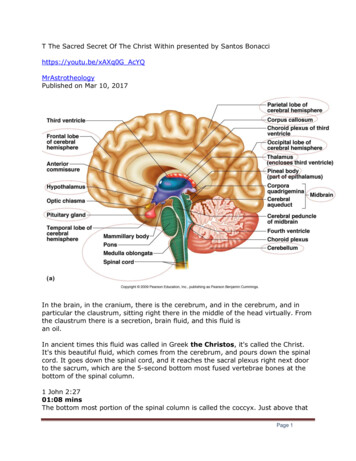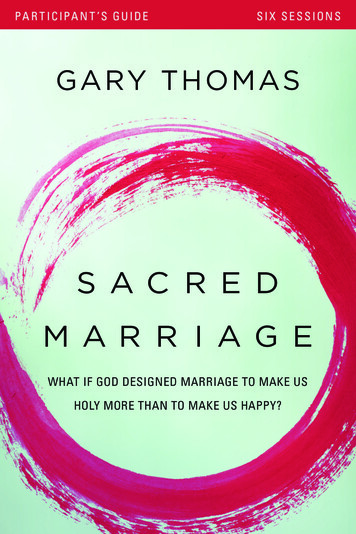Transcription
Downloaded from www.holybooks.com
The Complete SimonNecronomiconINTRODUCTIONIN THE MID - 1920's, roughly two blocks from where the Warlock Shop once stood, inBrooklyn Heights, lived a quiet, reclusive man, an author of short stories, who eventuallydivorced his wife of two years and returned to his boyhood home in Rhode Island, wherehe lived with his two aunts. Born on August 20, 1890, Howard Phillips Lovecraft wouldcome to exert an impact on the literary world that dwarfs his initial successes with WeirdTales magazine in 1923. He died, tragically, at the age of 46 on March 15, 1937, a victimof cancer of the intestine and Bright's Disease. Though persons of such renown asDashiell Hammett were to become involved in his work, anthologising it for publicationboth here an abroad, the reputation of a man generally conceded to be the "Father ofGothic Horror" did not really come into its own until the past few years, with the massivere-publication of his works by various houses, a volume of his selected letters, and hisbiography. In the July, 1975, issue The Atlantic Monthly, there appeared a story entitled"There Are More Things", written by Jorge Luis Borges, "To the memory of H.P.Lovecraft". This gesture by a man of the literary stature of Borges is certainly anindication that Lovecraft has finally ascended to his rightful place in the history ofAmerican literature, nearly forty years after his death.In the same year that Lovecraft found print in the pages of Weird Takes, anothergentleman was seeing his name in print; but in the British tabloid press.NEW SINISTER REVELATIONS OF ALEISTER CROWLEY read the front page ofthe Sunday Express. It concerned testimony by one of the notorious magician's formerfollowers (or, actually, the wife of one of his followers) that Crowley had beenresponsible for the death of her husband, at the Abbey of Thelema, in Cefalu, Sicily. Thebad press, plus the imagined threat of secret societies, finally forced Mussolini to deportthe Great Beast from Italy. Tales of horrors filled the pages of the newspapers in EnglandDownloaded from www.holybooks.com
for weeks and months to come: satanic rituals, black masses, animal sacrifice, and evenhuman sacrifice, were reported - or blatantly lied about. For although many of the storieswere simply not true or fanciful exaggeration, one thing was certain: Aleister Crowleywas a Magician, and one of the First Order.Born on October 12, 1875, in England - in the same country as Shakespeare - EdwardAlexander Crowley grew up in a strict Fundamentalist religious family, members of asect called the "Plymouth Brethren". The first person to call him by that Name andNumber by which he would become famous (after the reference in the Book ofRevelation), "The Beast 666", was his mother, and he eventually took this appellation toheart. He changed his name to Aleister Crowley while still at Cambridge, and by thatname , plus "666", he would never be long out of print, or out of newspapers. For hebelieved himself to be the incarnation of a god, an Ancient One, the vehicle of a NewAge of Man's history, the Aeon of Horus, displacing the old Age of Osiris. In 1904, hehad received a message, from what Lovecraft might have called "out of space", thatcontained the formula for a New World Order, a new system of philosophy, science, artand religion, but this New Order had to begin with the fundamental part, and commondenominator, of all four: Magick.In 1937, the year Lovecraft dies, the Nazis banned the occult lodges of Germany, notableamong them two organisations which Crowley had supervised: the A\ A\ and the O.T.O.,the latter of which he was elected head in England, and the former which he foundedhimself. There are those who believe that Crowley was somehow, magickally,responsible for the Third Reich, for two reasons: one, that the emergence of New WorldOrders generally seems to instigate holocausts and, two, that he is said to have influencedthe mind of Adolf Hitler. While it is almost certain that Crowley and Hitler never met, itis known that Hitler belonged to several occult lodges in the early days after the FirstWar; the symbol of one of these, the Thule Gesellschaft which preached a doctrine ofAryan racial superiority, was the infamous Swastika which Hitler was later to adopt asthe Symbol of the forms, however, is evident in many of his writings, notably the essayswritten in the late 'Thirties. Crowley seemed to regard the Nazi phenomenon as aCreature of Christianity, in it's anti-Semitism and sever moral restrictions concerning itsadherents, which lead to various types of lunacies and "hangups" that characterised manyof the Reich's leadership. Yet, there can be perhaps little doubt that the chaos whichengulfed the world in those years was prefigured, and predicted, in Crowley's Liber ALvel Legis; the Book of the Law.The Mythos and the MagickWe can profitably compare the essence of most of Lovecraft's short stories with the basicthemes of Crowley's unique system of ceremonial Magick. While the latter was asophisticated psychological structure, intended to bring the initiate into contact with hisDownloaded from www.holybooks.com
higher Self, via a process of individuation that is active and dynamic (being broughtabout by the "patient" himself) as opposed to the passive depth analysis of the Jungianadepts, Lovecraft's Cthulhu Mythos was meant for entertainment. Scholars, of course, areable to find higher, ulterior motives in Lovecraft's writings, as can be done with anymanifestation of Art.Lovecraft depicted a kind of Christian Myth of the struggle between opposing forces ofLight and Darkness, between God and Satan, in the Cthulhu Mythos. Some critics maycomplain that this smacks more of the Manichaen heresy than it does of genuineChristian dogma; yet, as a priest and former monk, I believe it is fair to say that thisdogma is unfortunately very far removed from the majority of the Faithful to be of muchconsequence. The idea of a War against Satan, and of the entities of Good and Evilhaving roughly equivalent Powers, is perhaps best illustrated by the belief, commonamong the Orthodox churches of the East, in a personal devil as well as a personal angel.This concept has been amplified by the Roman Catholic Church to such an extent perhaps subconsciously - that a missal in the Editor's possession contains an engravingfor the Feast of St. Andrew, Apostle, for November 30, that bears the legend "Ecce QuiTollis Peccata Mundi" - Behold Him Who Taketh Away The Sins of the World - and thepicture above it is of the atomic bomb!Basically, there are two "sets" of gods in the mythos : the Elder Gods, about whom notmuch is revealed, save that they are a stellar Race that occasionally comes to the rescueof man, and which corresponds to the Christian "Light"; and the Ancient Ones, aboutwhich much is told, sometimes in great detail, who correspond to "Darkness". Theselatter are the Evil Gods who wish nothing but ill for the Race of Man, and who constantlystrive to break into our world through a Gate or Door that leads from the Outside, In.There are certain people, among us, who are devotees of the Ancient Ones, and who tryto open the Gate, so that this evidently repulsive organisation may once again rule theEarth. Chief among these is Cthulhu, typified as a Sea Monster, dwelling in the GreatDeep, a sort of primeval Ocean; a Being that Lovecraft collaborator August Derlethwrongly calls a "water elemental". There is also Azazoth, the blind idiot god of Chaos,Yog Sothot, Azathoth's partner in Chaos, Shub Niggurath, the "goat with a thousandyoung", and others. They appear at various times throughout the stories of the CthulhuMythos in frightening forms, which test the strength and resourcefulness of theprotagonists in their attempts to put the hellish Things back to whence they came. Thereis an overriding sense of primitive dear and cosmic terror in those pages, as though manis dealing with something that threatens other than his physical safety: his very spiritualnature. This horror-cosmology is extended by the frequent appearance of the Book,NECRONOMICON.The NECRONOMICON, is according to Lovecraft's tales, a volume written in Damascusin the Eighth Century, A.D., by a person called the "Mad Arab", Abdhul Alhazred. Itmust run roughly 800 pages in length, as there is a reference in one of the storiesconcerning some lacunae on a page in the 700's It had been copied and reprinted invarious languages - the story goes - among them Latin, Greek and English. Doctor Dee,the Magus of Elizabethan fame, was supposed to have possessed a copy and translated it.Downloaded from www.holybooks.com
This book, according to the mythos, contains the formulae for evoking incredible thingsinto visible appearance, beings and monsters which dwell in the Abyss, and Outer Space,of the human psyche.Such books have existed in fact, and do exist. Idries Shah tells us of a search heconducted for a copy of the Book of Power by the Arab magician Abdul-Kadir (see: TheSecret Lore of Magic by Shah), of which only one copy was ever found. The Keys ofSolomon had a similar reputation, as did The Magus by Barret, until all of these workswere eventually reprinted in the last fifteen years or so. The Golden Dawn, a famousBritish and American Occult lodge of the turn of the Century, was said to have possesseda manuscript called "the Veils of Negative Existence" by another Arab.These were the sorcerer's handbooks, and generally not meant as textbooks orencyclopedias of ceremonial magick. In other words, the sorcerer or magician issupposed to be in possession of the requisite knowledge and training with which to carryout a complex magickal ritual, just as a cook is expected to be able to master thescrambling of eggs before he conjures an "eggs Benedict"; the grimoires, or Black Books,were simply variations on a theme, like cookbooks, different records of what previousmagicians had done, the spirits they had contacted, and the successes they had. Themagicians who now read these works are expected to be able to select the wheat from thechaff, in much the same fashion as an alchemist discerning the deliberate errors in atreatise on his subject.Therefore it was (and is) insanity for the tyro to pick up a work on ceremonial Magicklike the Lesser Key of Solomon to practise conjurations. It would also be folly to pick upCrowley's Magick in Theory and Practise with the same intention. Both books aredefinitely not for beginners, a point which cannot be made too often. Unfortunately,perhaps, the dread NECRONOMICON falls into this category.Crowley's Magick was a testimony of what he has found in his researches into theforbidden, and forgotten, lore of past civilisations and ancient times. His Book of the Lawwas written in Cairo in the Spring of 1904, when he believed himself to be in contactwith a praeter-human intelligence called Aiwass who dictated to him the Three Chaptersthat make up the Book. It had influenced him more than any other, and the remainder ofhis life was spent trying to understand it fully, and to make its message known to theworld. It, too, contains the formulae necessary to summon the invisible into visibility, andthe secrets of transformations are hidden within its pages, but this is Crowley's ownNECRONOMICON, received in the Middle East in the shadow of the Great Pyramid ofGizeh, and therein is writ not only the beauty, but the Beast that yet awaits mankind.It would be vain to attempt to deliver a synopsis of Crowley's philosophy, save that its'leitmotif' is the RabelaisianDo what thou wilt shall be the whole of the Law.Downloaded from www.holybooks.com
The actual meaning of this phrase has taken volumes to explain, but roughly it concernsthe uniting of the conscious Self, a process of individuation which culminates in a ritecalled "Knowledge and Conversation of the Holy Guardian Angel"; the Angel signifyingthe pure, evolved Self.Yet, there are many terrors on the Way to the Self, and an Abyss to cross before victorycan be declared. Demons, vampires, psychic leeches, ghastly forms accost the aspiringmagician from every angle, from every quarter around the circumference of the magickcircle, and they must be destroyed lest they devour the magician himself. When Crowleyprofessed to have passed the obstacles, and crossed the Abyss of Knowledge, and foundhis true Self, he found it was identical with the Beast of the Book of Revelation, 666,whom Christianity considers to represent the Devil. Indeed, Crowley had nothing butadmiration for the Shaitan (Satan) of the so-called "devil-worshipping" cult of theYezidis of Mesopotamia, knowledge of which led him to declare the lines that open thisIntroduction. For he saw that the Yezidis possess a Great Secret and a Great Traditionthat extends far back into time, beyond the origin of the Sun cults of Osiris, Mithra andChrist; even before the formation of the Judaic religion, and the Hebrew tongue. Crowleyharkened back to a time before the Moon was worshipped, to the "Shadow Out of Time";and in this, whether he realised it as such or not, he had heard the "Call of Cthulhu".SumeriaThat a reclusive author of short stories who lived in a quiet neighbourhood in NewEngland, and the manic, infamous Master Magician who called the world his home,should have somehow met in the sandy wastes of some forgotten civilisation seemsincredible. That they should both have become Prophets and Forerunners of a New Aeonof Man's history is equally, if not more, unbelievable. Yet, with H.P. Lovecraft andAleister Crowley, the unbelievable was a commonplace of life. These two men, bothacclaimed as geniuses by their followers and admirers, and who never actually met,stretched their legs across the world, and in the Seven League Boots of the mind they didmeet, and on common soil . . . . Sumeria.Sumeria is the name given to a once flourishing civilisation that existed in what is nowknown as Iraq, in the area called by the Greeks "Mesopotamia" and by the Arabs as,simply, "The Island" for it existed between two rivers, the Tigris and the Euphrates,which run down from the mountains to the Persian Gulf. This is the site of the fabled cityof Babylon, as well as of Ur of the Chaldees and Kish, with Nineveh far to the north.Each of the seven principal cities of Sumeria was ruled by a different deity, who wasworshipped in the strange, non-Semitic language of the Sumerians; and language whichhas been closely allied to that of the Aryan race, having in fact many words identical toDownloaded from www.holybooks.com
that of Sanskrit (and, it is said, to Chinese!).For no one knows where the Sumerians came from, and they vanished just asmysteriously as they appeared, after the Assyrian invasions which decimated theirculture, yet providing the Assyrians with much of their mythology and religion; so muchso that Sumerian became the official language of the state church, much as Latin is todayof the Roman Catholic Church. They had a list of their kings before the Flood, whicheven they carefully chronicled, as did many another ancient civilisation around the world.It is believed that they had a sophisticated system of astronomy (and astrology) as well asan equally religious rituale. Magick, as well in history, begins at Sumer for the WesternWorld, for it his here, in the sand-buried cuneiform tablets that recorded an Age, that thefirst Creation Epic is found, the first exorcism, the first ritual invocations of planetarydeities, the first dark summonings of evil Powers, and ironically, the first "burnings" ofpeople the anthropologists call "Witches".Lovecraft's mythos deals with what are known chthonic deities, that is, underworld godsand goddesses, much like the Leviathan of the Old Testament. The pronunciation ofchthonic is 'katonic', which explains Lovecraft's famous Miskatonic River andMiskatonic University, not to mention the chief deity of his pantheon, Cthulhu, a seamonster who lies, "not dead, but dreaming" below the world; an Ancient One andsupposed enemy of Mankind and the intelligent Race. Cthulhu is accompanied by anassortment of other grotesqueries, such as Azathot and Shub Niggurath. It is of extremeimportance to occult scholars that many of these deities had actual counterparts, at leastin name, to deities of the Sumerian Tradition, that same Tradition that the Magus AleisterCrowley deemed it so necessary to "rediscover".The Underworld in ancient Sumer was known by many names, among them ABSU or"Abyss", sometimes as Nar Mattaru, the great Underworld Ocean, and also as Cutha orKUTU as it is called in the Enuma Elish (the Creation Epic of the Sumerians). Thephonetic similarity between Cutha and KUTU and Chthonic, as well as Cthulhu, isstriking. Judging by a Sumerian grammar at hand, the word KUTULU or Cuthalu(Lovecraft's's Cthulhu Sumerianised) would mean "The Man of KUTU (Cutha); the Manof the Underworld; Satan or Shaitan, as he is known to the Yezidis (whom Crowleyconsidered to be the remnants of the Sumerian Tradition). The list of similarities, bothbetween Lovecraft's creations and the Sumerian gods, as well as between Lovecraft'smythos and Crowley's magick, can go on nearly indefinitely, and in depth, for whichthere is no space here at present. An exhaustive examination of Crowley's occultism inlight of recent findings concerning Sumeria, and exegesis on Lovecraft's stories, ispresently in preparation and is hoped to be available shortly. Until that time, a fewexamples should suffice.Although a list is appended hereto containing various entities and concepts of Lovecraft,Crowley, and Sumeria cross-referenced, it will do to show how the Editor foundrelationships to be valid and even startling. AZATOT is frequently mentioned in the grimpages of the Cthulhu Mythos, and appears in the NECRONOMICON as AZAG-THOTH,a combination of two words, the first Sumerian and the second Coptic, which gives us aDownloaded from www.holybooks.com
clue as to Its identity. AZAG in Sumerian means "Enchanter" or "Magician"; THOTH inCoptic is the name given to the Egyptian God of Magick and Wisdom, TAHUTI, whowas evoked by both the Golden Dawn and by Crowley himself (and known to the Greeksas Hermes, from whence we get "Hermetic"). AZAG-THOTH is, therefore, a Lord ofMagicians, but of the "Black" magicians, or the sorcerers of the "Other Side".There is a seeming reference to SHUB NIGGURATH in the NECRONOMICON, in thename of a Sumerian deity, the "Answerer of Prayers", called ISHNIGARRAB. The word"Shub" is to be found in the Sumerian language in reference to the Rite of Exorcism, oneof which is called Nam Shub and means "the Throwing". It is, however, as yet unclear asto what the combination SHUB ISHNIGARRAB (SHUB NIGGURATH) might actuallymean.There was a battle between the forces of "light" and "darkness" (so-called) that took placelong before man was created, before even the cosmos as we know it existed. It isdescribed fully in the Enuma Elish and in the bastardised version found in theNECRONOMICON, and involved the Ancient Ones, led by the Serpent MUMMUTIAMAT and her male counterpart ABSU, against the ELDER GODS (called such in theN.) led by the Warrior MARDUK, son of the Sea God ENKI, Lord of Magicians of thisSide, or what could be called "White Magicians" - although close examination of themyths of ancient times makes one pause before attempting to judge which of the twowarring factions was "good" or "evil". MARDUK won this battle - in much the same waythat later St. George and St. Michael would defeat the Serpent again - the cosmos wascreated from the body of the slain Serpent, and man was created from the blood of theslain commander of the Ancient Army, KINGU, thereby making man a descendent of theBlood of the Enemy, as well as the "breath" of the Elder Gods; a close parallel to the"sons of God and daughters of men" reference in the Old Testament. Yet, though theidentity of the Victor is clear, there were - and are - certain persons and organisations thatdared side with the vanquished, believing the Ancient Ones to be a source of tremendous,and most unbelievable, power.Worship of the Ancient Ones in History"Let them curse it that curse the day, who are skilful to rouse Leviathan." - JOB3:8S.H. Hooke, in his excellent Middle Eastern Mythology, tells us that the Leviathanmentioned in JOB, and elsewhere in the Old Testament, is the Hebrew name given to theSerpent TIAMAT, and reveals that there was in existence either a cult, or scatteredindividuals, who worshipped or called up the Serpent of the Sea, or Abyss. Indeed, theHebrew word for Abyss that is found in GENESIS 1:2 is, Hooke tells us, tehom, whichDownloaded from www.holybooks.com
the majority of scholars take to be a survival of the name of the chaos-dragon TIAMATor Leviathan that is identified closely with KUTULU or Cthulhu within the pages arementioned independently of each other, indicating that somehow KUTULU is the malecounterpart of TIAMAT, similar to ABSU.This monster is well known to cult worship all over the world. In China, however, thereis an interesting twist. Far from being considered a completely hostile creature, dedicatedto the erasure of mankind from the page of existence, the Dragon is given a place of preeminence and one does not hear of a Chinese angel or saint striving to slay the dragon,but rather to cultivate it. The Chinese system of geomancy, feng shui (pronounced fungshway) is the science of understanding the "dragon currents" which exist beneath theearth, these same telluric energies that are distilled in such places as Chartres Cathedral inFrance, Glastonbury Tor in England, and the Ziggurats of Mesopotamia. In both theEuropean and Chinese cultures, the Dragon or Serpent is said to reside somewhere"below the earth"; it is a powerful force, a magickal force, which is identified withmastery over the created world; it is also a power that can be summoned by the few andnot the many. However, in China, there did not seem to be a backlash of fear orresentment against this force as was known in Europe and Palestine, and the symbol ofmight and kingship in China is still the Dragon. In the West, the conjuration, cultivation,or worship of this Power was strenuously opposes with the advent of the Solar,Monotheistic religions and those who clung to the Old Ways were effectivelyextinguished. The wholesale slaughter of those called "Witches" during the Inquisition isan example of this, as well as the solemn and twisted - that is to say, purposeless andunenlightened - celibacy that the Church espoused. For the orgone of Wilhelm Reich isjust as much Leviathan as the Kundalini of Tantrick adepts, and the Power raised by theWitches. It has always, at least in the past two thousand years, been associated withoccultism and essentially with Rites of Evil Magick, or the Forbidden Magick, of theEnemy, and of Satan . . . . . and the twisting, sacred Spiral formed by the Serpent of the Caduceus, and by thespinning of the galaxies, is also the same Leviathan as the Spiral of the biologists' Codeof Life : DNAThe Goddess of the WitchesThe current revival of the cult called WICCA is a manifestation of the ancient secretsocieties that sought to tap this telluric, occult force and use it to their own advantage,and to the advantage of humanity as was the original intent. The raising of the Cone ofPower through the circle dancing is probably the simplest method of attaining results in"rousing Leviathan", and has been used by societies as diverse as the Dervishes in theMiddle East and the Python Dancers of Africa, not to mention the round dances that werefamiliar to the Gnostic Christians, and the ones held every year in the past at Chartres.Downloaded from www.holybooks.com
The Witches of today, however, while acknowledging the importance of the Maleelement of telluric Power, generally prefer to give the greater honour to the FemalePrinciple, personified as the Goddess. The Goddess has also been worshipped all over theworld, and under many names, but is still essentially the same Goddess. That TIAMATwas undoubtedly female is to the point; and that the Chinese as well as the Sumeriansperceived of two dragon currents, male and female, gives the researchers a more complexpicture. The Green Dragon and the Red Dragon of the alchemists are thus identified, asthe positive and negative energies that compromise the cosmos of our perception, asmanifest in the famous Chinese yin-yang symbol.But what of INANNA, the single planetary deity having a female manifestation amongthe Sumerians? She is invoked in the NECRONOMICON and identified as thevanquisher of Death, for she descended into the Underworld and defeated her sister, theGoddess of the Abyss, Queen ERESHKIGAL (possibly another name for TIAMAT).Interestingly enough, the myth has many parallels with the Christian concept of Christ'sdeath and resurrection, among which the Crucifixion (INANNA was impaled on a stakeas a corpse), the three days in the Sumerian Hades, and the eventual Resurrection areoutstanding examples of how Sumerian mythology previewed the Christian religion byperhaps as many as three thousand years - a fact that beautifully illustrates the cosmic andeternal nature of this myth.Therefore, the Goddess of the Witches has two distinct forms: the Ancient One, Goddessof the Dragon-like telluric Power which is raised in Magickal rituals, and the ElderGoddess, Defeater of Death, who brings the promise of Resurrection and Rejuvenation toher followers those who must reside for a time after death and between incarnations inwhat is called the "Summerland".Sumer-land?Another hallmark of the Craft of the Wise is evident within the NECRONOMICON, aswell as in general Sumerian literature, and that is the arrangement of the cross-quarterdays, which make up half of the Craft's official pagan holidays. These occur on the evesof February 2nd, May 1st, August 1st, and November 1st, and are called Candlemas,Beltane, Lammas and Samhain (or Hallows), respectively.The name Lammas has a curious origin in the dunes at Sumer. It is not less than the nameof one of the four mythological Beasts of the astrological fixed signs, Lamas being thename of the half-lion, half-man Guardian of Leo (the sign governing most of August,when the feast of Lammas takes place), and USTUR being that of Aquarius (February),SED that of Taurus (May) and NATTIG that of Scorpio (November). I do not believe thatthis is a fantastic assumption, the Sumerian origin of the Feast of Lammas. Indeed, itseems just as valid as the ideas of Idries Shah concerning Craft etymology as presented inhis book, The Sufis. It is also not far-fetched to assume that these four beasts were knownDownloaded from www.holybooks.com
to the entire region of the Middle East, as they appear on the Sphinx in Egypt, and havebecome the symbols of the Four Evangelists of the Christian New Testament - an ironicand splendid result of the ignorance of the Greek religious historians concerning theancient mysteries!Probable the most inconsistent concept the Sumerians possesses with reference to theCraft is the naming of the Goddess as a deity, not of the Moon (as the Craft would haveit), but of the planet Venus. The Moon was governed by a male divinity, NANNA (likeINANNA but minus the initial 'I'), and was considered the Father of the Gods by theearliest Sumerian religion. It should be noted, however, that all of the planetary deities,termed "the zoned Ones" or zonei in Greek, and indeed all of the Sumerian deities, hadboth male and female manifestations, showing that the Sumerians definitely recognised ayin-yang composition if the universe (the "male Moon" idea is, the Editor is given tounderstand, common to so-called Aryan mythologies). There is also evidence to showthat every god and goddess also had both a good and an evil nature, and evil gods werebanished in the exorcism formulae of that civilisation as well as the lesser forms ofdemon.The Horned MoonAs mentioned, the God of the Moon was called NANNA by the Sumerians. By the laterSumerians and Assyrians, he was called SIN. In both cases, he was the Father of theGods (of the planetary realm, the zonei), and was depicted as wearing horns, a symbolfamiliar to the Witches as representative of their God. The horn shaped crown isillustrative of the crescent phases of the Moon, and were symbolic of divinity in manycultures around the world, and were also thought to represent certain animals who werehorned, and worshipped for their particular qualities, such as the goat and bull. They alsorepresent sexual power.The fact that, in ancient Sumeria and Egypt, horns were solely representative of evilgods, but of many different deities, was used by the Christian Church in their attempt toeradicate pagan faiths. It was a simple enough symbol to identify with the Author of Evil,Satan, which the Church depicted as a half-animal, half-human creature with horns,claws, and sometimes a tail. The Church's use of the horns as a sort of archetype of Evilis quite similar to the feeling many people have today with regards to the swastika usedby the Nazis, a symbol which has become the archetype of an evil sigil in the West. Thefact that it is a highly valued mystical and religious symbol in the East is something thatis not well-known. What is worse, the image of the Devil as perpetrated by the Church issimultaneously representative of sexual energy, and can be safely compared to Jung'sarchetype of the Shadow, the psychic repository of a man's innate maleness, as the animarepresents that part of a man which is feminine. Truly, the pictures painted of a Satanicritual by the pious Catholic clergymen was one of sexual orgies and "perversions", andDownloaded from www.holybooks.com
the handbook of the Inquisitors, the Malleus Maleficarum - which has been responsiblefor the deaths of many more people than even Hitler's Mein Kampf - is full of detailedsexual i
Both books are definitely not for beginners, a point which cannot be made too often. Unfortunately, perhaps, the dread NECRONOMICON falls into this category. Crowley's Magick was a testimony of what he has found in his researches into the forbidden, and forgotten, lore of
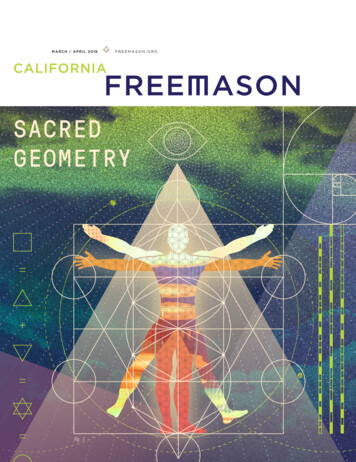
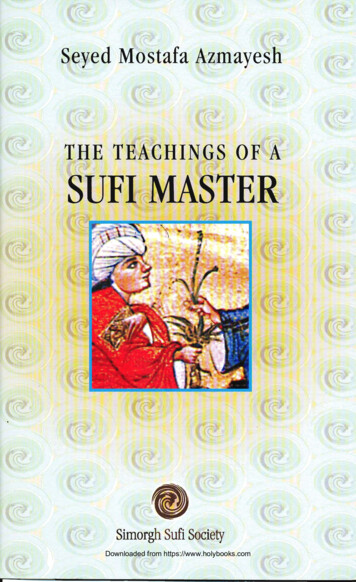
![The Book of the Damned, by Charles Fort, [1919], at sacred .](/img/24/book-of-the-damned.jpg)
